Day #6 - Wurzburg, Germany (Page Eleven)


After traveling all night, we make a quick stop at Karlstadt to drop of folks going on an extended excursion then we sail forward to Würzburg arriving at 1:00 PM in the afternoon. We only have a short time as we must be back on board by 5:00 PM to head to Hassfort.
Würzburg is a city in Germany's Bavaria region. It's known for lavish baroque and rococo architecture, particularly the 18th-century Residenz palace, with ornate rooms, a huge fresco by Venetian artist Tiepolo and an elaborate staircase. Home to numerous wine bars, cellars and wineries, Würzburg is the center of the Franconian wine country, with its distinctive bocksbeutel (bottles with flattened round shapes).

A short jaunt to the next destination

Our first mini-stop! Karlstadt - The town lies roughly 25 km north of Würzburg in the Main-Franconian wine growing region.
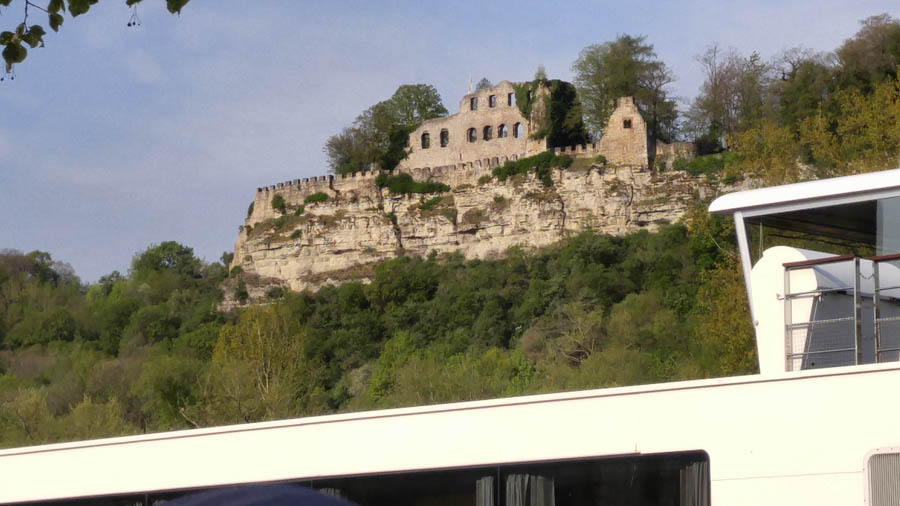
Off again as soon as some passengers were dropped off
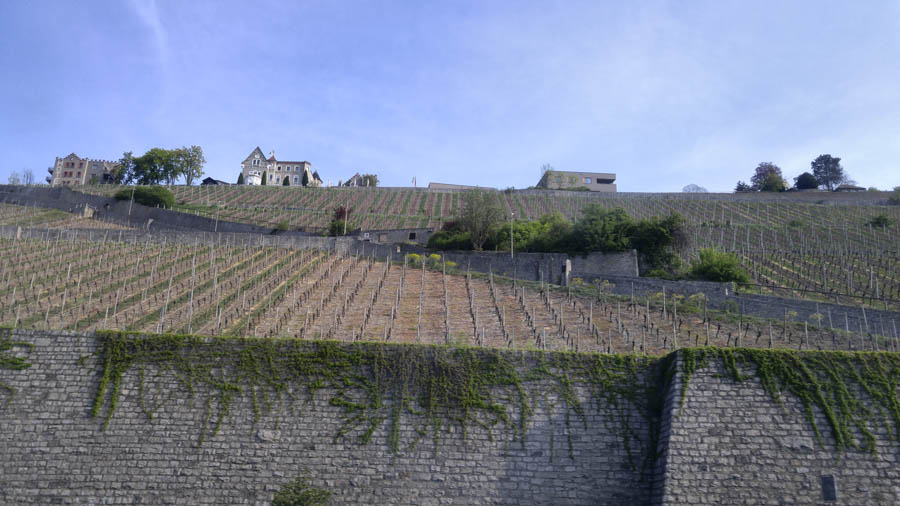
Wonderful wine country

We can see a lot from the ship

A short walk and we are in town

A pedestrian bridge... Wonderful for watching the ship traffic
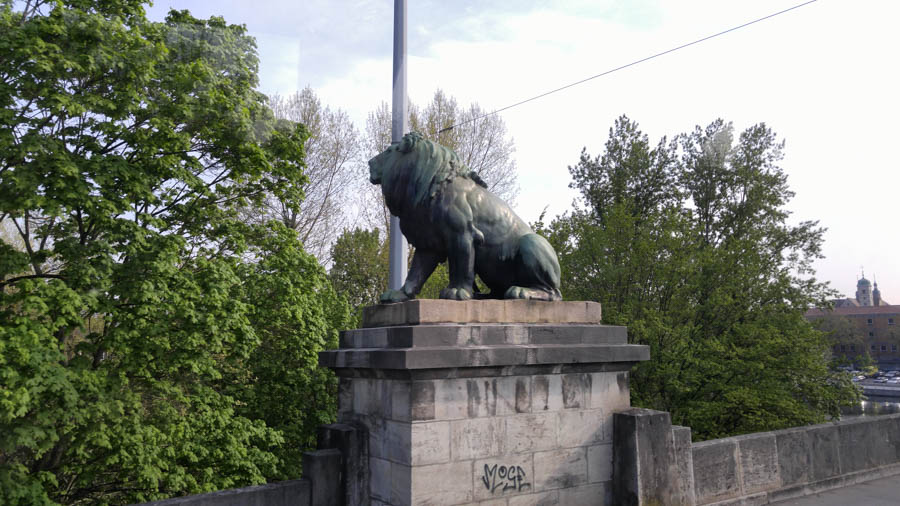
Guarding the bridge
Did You Know? - Würzburg lies about equidistant from Frankfurt am Main and from Nuremberg (each about 120 kilometers or 75 miles away). Although the city of Würzburg is not part of the Landkreis Würzburg, (i.e., district of Würzburg), it is the seat of the district's administration. The city has a population of around 124,000 people.

Like a mirror this afternoon

The Fortress has a commanding view
Did You Know? - Marienberg Fortress (German: Festung Marienberg) is a prominent landmark on the left bank of the Main river in Würzburg, in the Franconia region of Bavaria, Germany.
The mighty Fortress Marienberg is a symbol of Würzburg and served as a home of the local prince-bishops for nearly five centuries. It has been a fort since ancient times.
Most of the current structures originally were built in Renaissance and Baroque styles between the 16th and 18th centuries.
After Gustavus Adolphus of Sweden conquered the area in 1631 during the Thirty Years' War, the castle was reconstructed as a Baroque residence.
After it ceased to serve as residence of the Bishops of Würzburg, the fortress saw repeated action in the wars of the late 18th and 19th centuries. Festung Marienberg was severely damaged by British bombs in March 1945 and only fully rebuilt in 1990. Today, it houses two museums.

An amazing building with a thousand year history

Click for a panorama from the fortress (It's 24 MB in size!)
Did You Know? - Towards the end of World War II, the Echterbastei served as a medical depot and then as a depository of cultural treasures. During the bombing of Würzburg by the Royal Air Force on 16 March 1945, significant parts of the fortress were destroyed by fire caused by incendiary bombs. Reconstruction commenced after 1950 and was finished only in 1990.


We have more walking to do!
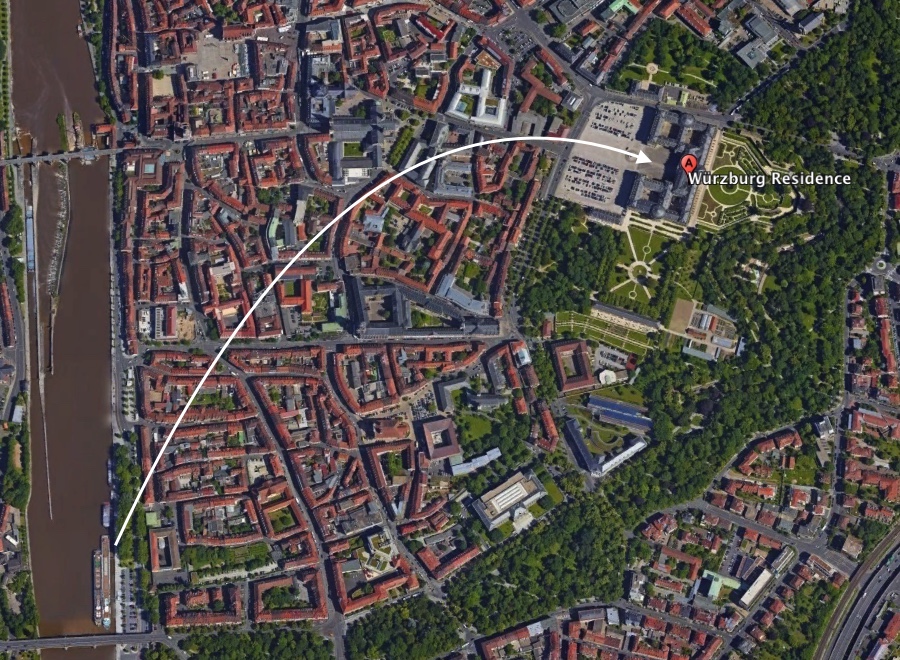
A few blocks from our ship
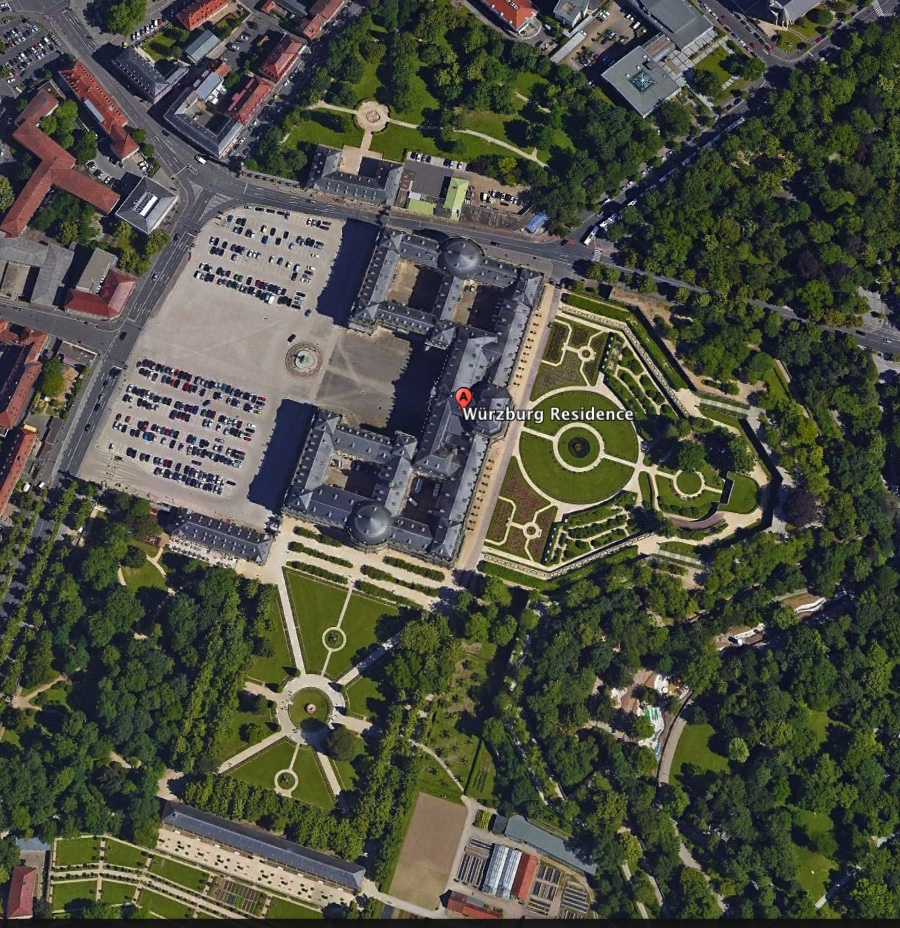
Aerial view reveals its size
Did You Know? - Würzburger Residenz: A UNESCO World Heritage Site, the vast compound near the center of the town was commissioned by two prince-bishops, the brothers Johann Philipp Franz and Friedrich Karl von Schönborn. Several architects, including Johann Lukas von Hildebrandt and Maximilian von Welsch, supervised the construction between 1720 and 1744, but it is mainly associated with the name of Balthasar Neumann, the creator of its famous Baroque staircase. The palace suffered severe damage in the British bombing of March 1945, but has been completely rebuilt.
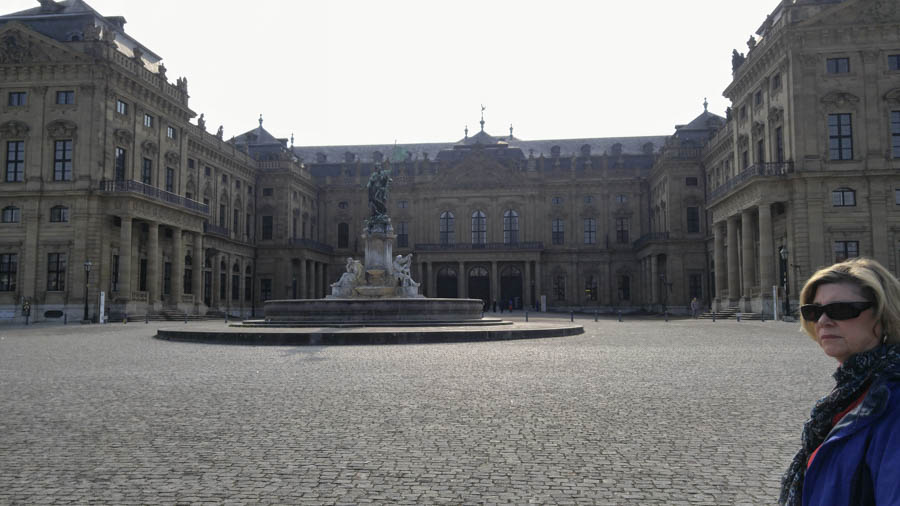
Nice little house

Must be the owners?

The Residence has a wonderful garden to walk through
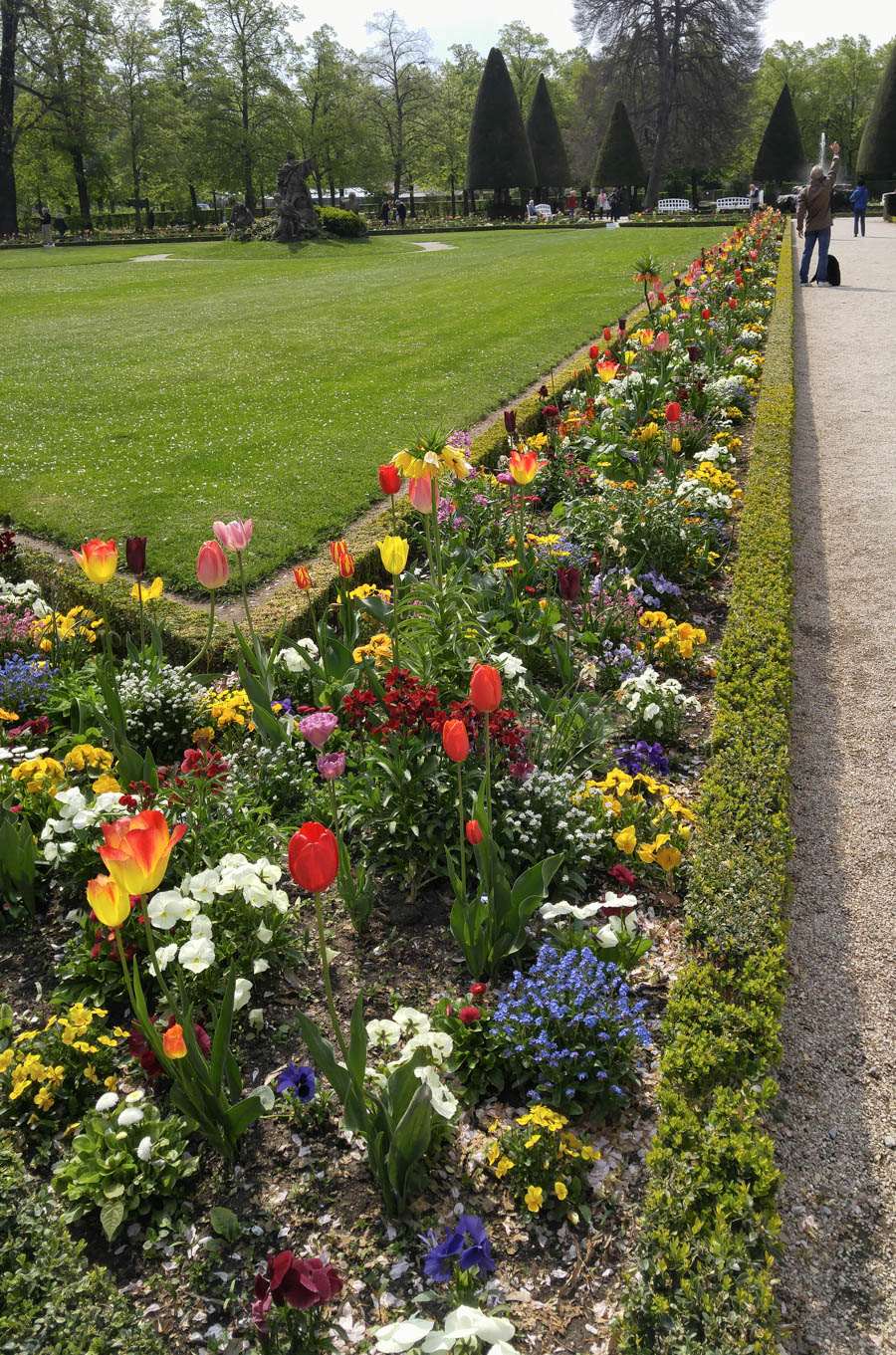
Acres and acres of landscaping

A magnificent display

"I am getting my flower fix"
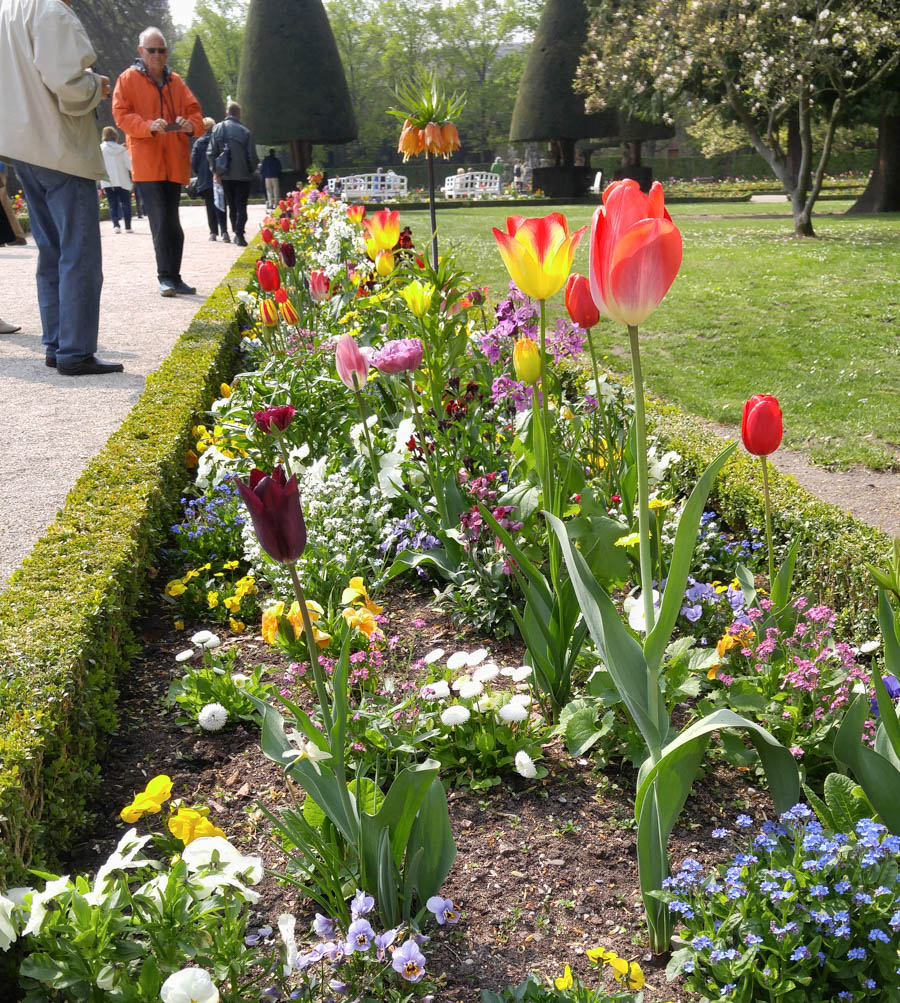
More tulips?

The garden side of the residence
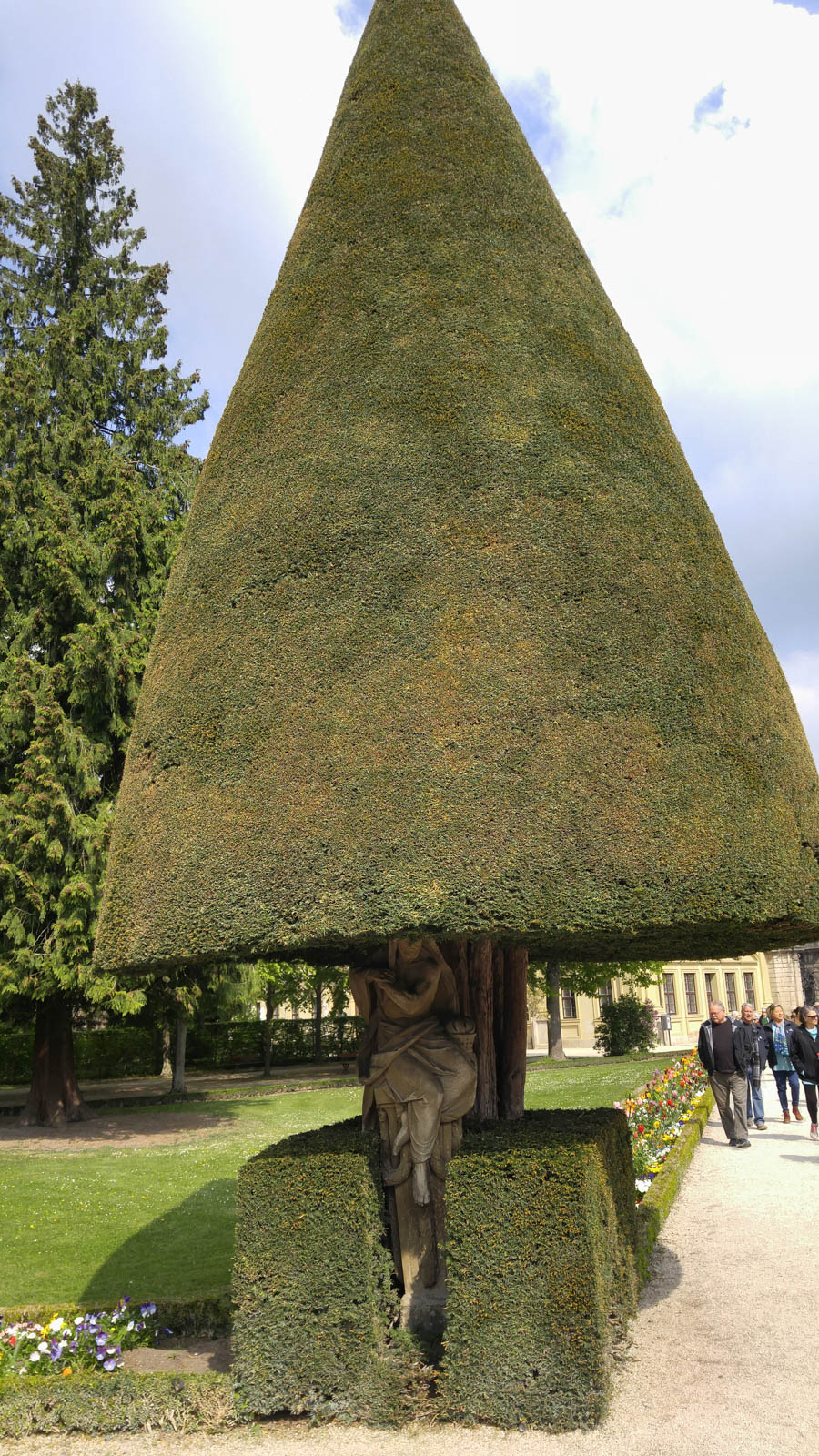
Hiding under the tree
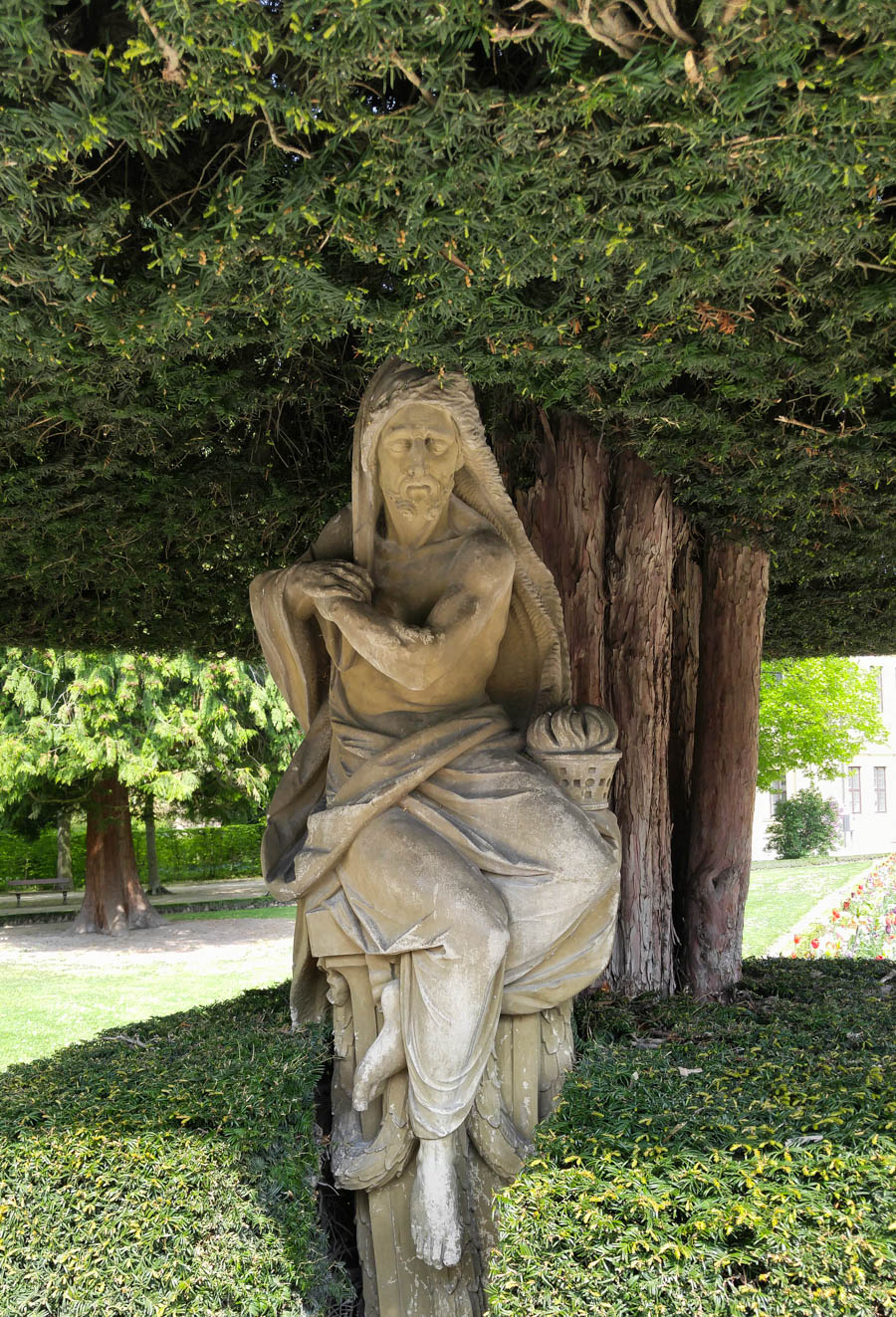
Caught you!

A relaxing afternoon


Also close to the dock! (Click for full sized image)

Aerial view shows it's true size
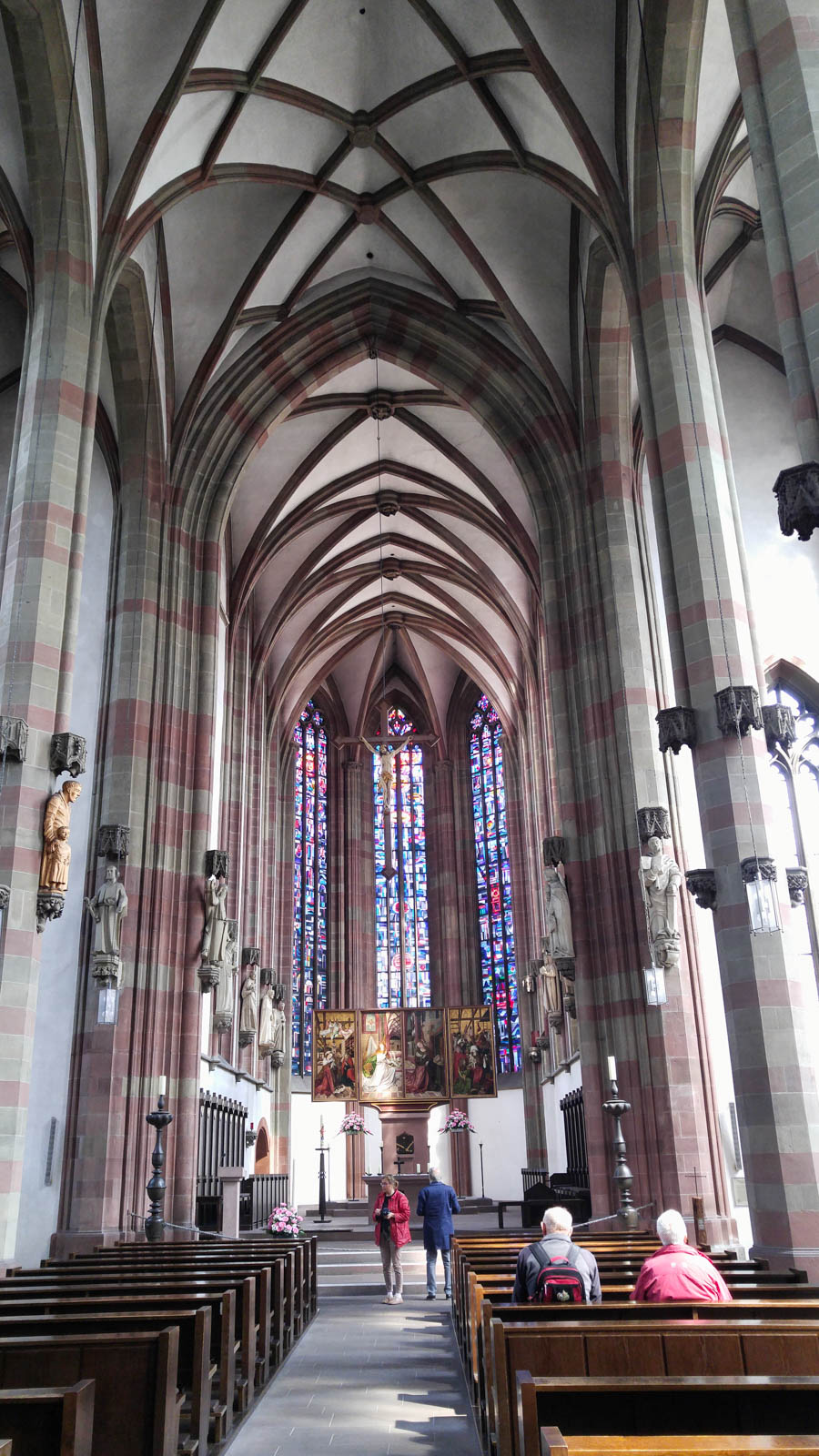
The cathedral was amazing inside
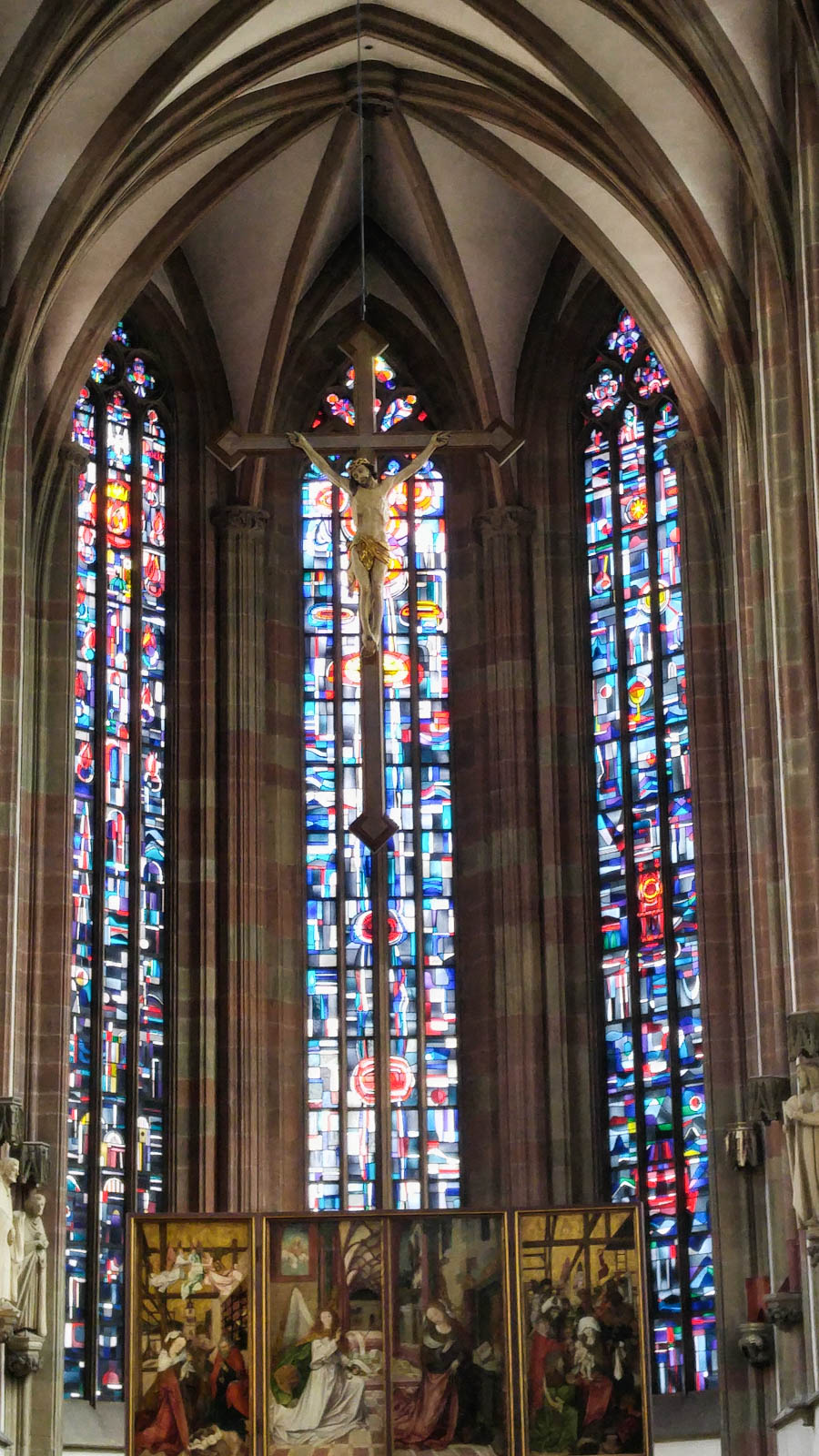
It's an eye catcher!
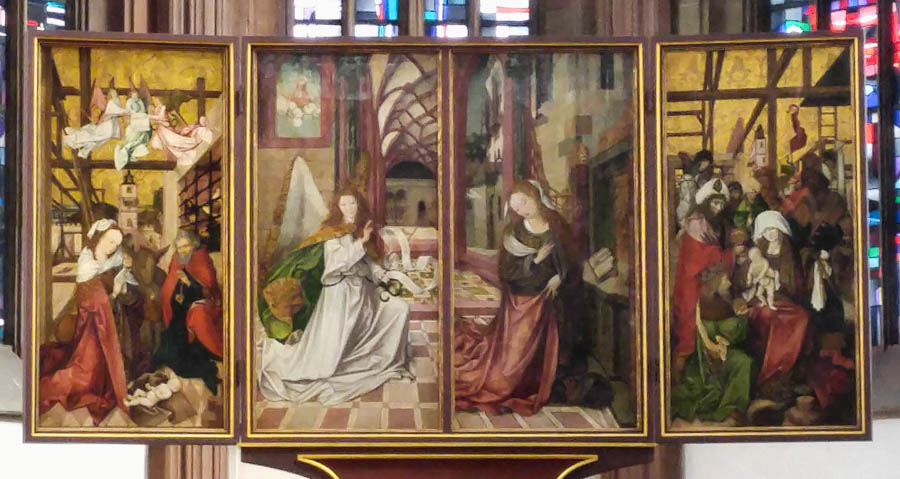
Paintings dating back to the 1500's
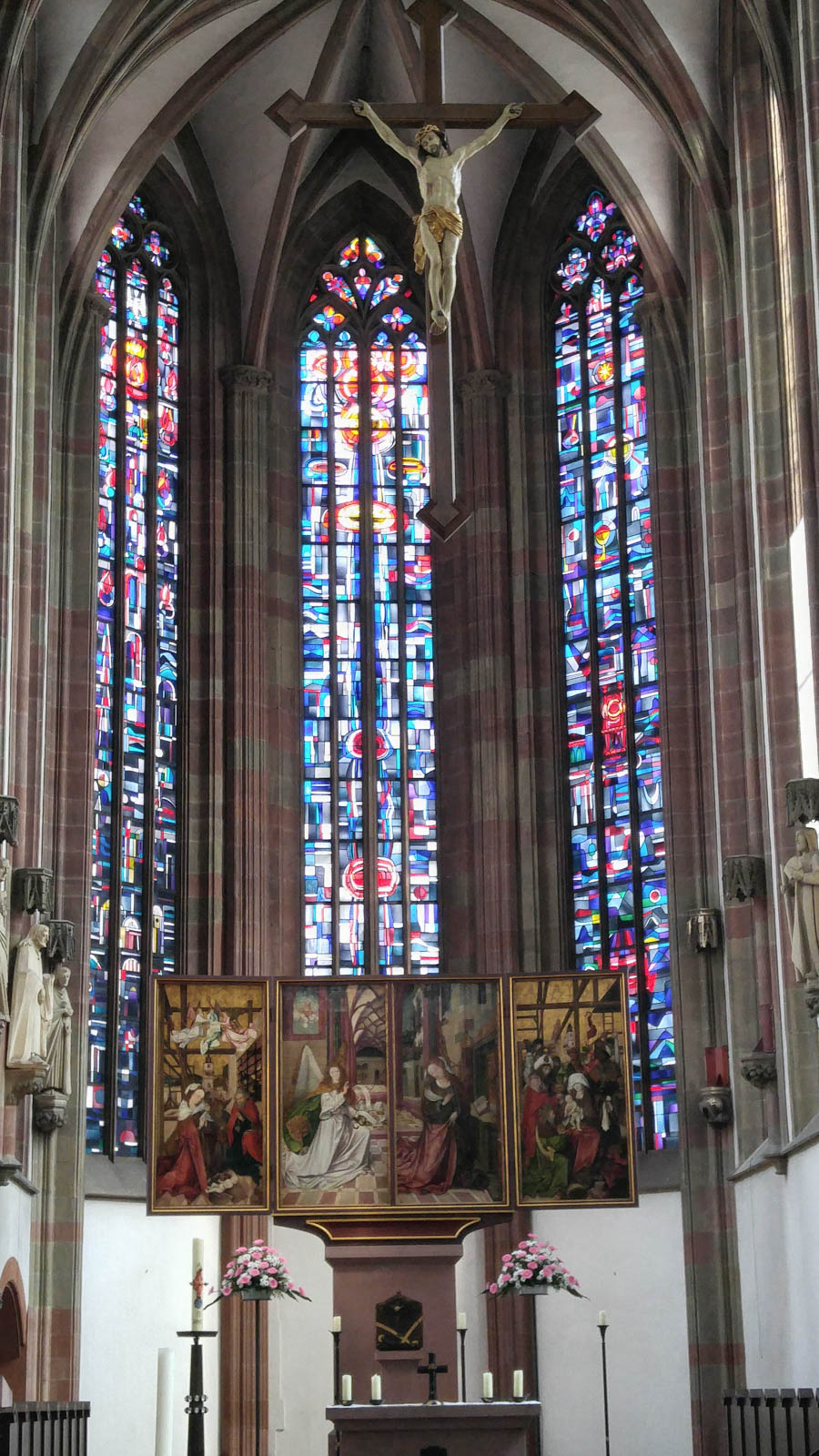
Still in active use to this very day
Did You Know? - Würzburg Cathedral (German: Würzburger Dom) is a Roman Catholic cathedral in Würzburg in Bavaria, Germany, dedicated to Saint Kilian. It is the seat of the Bishop of Würzburg and has served as the burial place for the Prince-Bishops of Würzburg for hundreds of years. With an overall length of 103 metres it is the fourth largest Romanesque church building in Germany
n

Love the colors
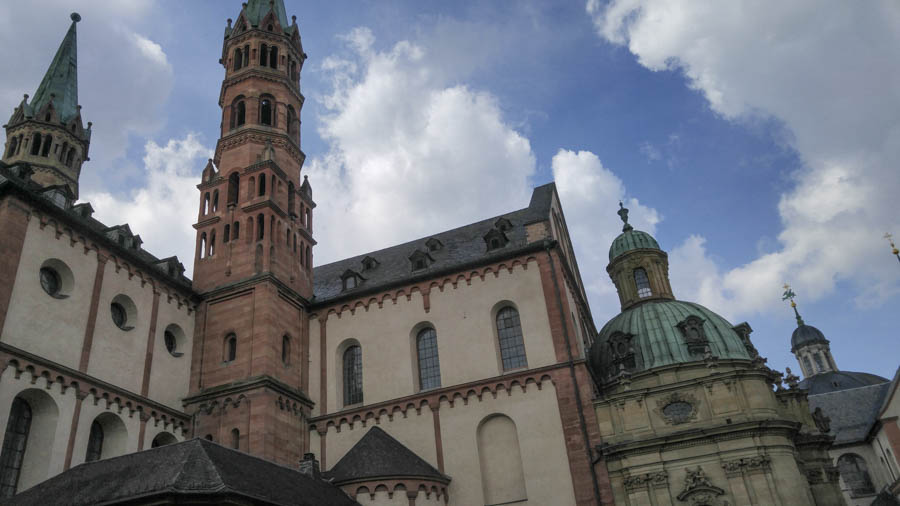
Standing strong today
Did You Know? - The greater part of the building collapsed in the winter of 1946 in consequence of the fire bombing of Würzburg on 16 March 1945. Reconstruction was completed in 1967, in the course of which the Baroque components were removed in favour of a re-Romanisation.
The new interpretation emphasizes the contrast between the surviving historical parts of the structure, resulting in a sometimes controversial combination of predominantly Romanesque with modern and Baroque elements.
The Romanesque Revival west front with a rose window, the tripartite gallery and the opening for the clock were combined during the reconstruction with a plain pumice stone wall, and revealed again during renovation work up to November 2006.
In 1988 the choir was redesigned by Hubert Elsässer.
The stucco ceiling that had collapsed in 1946 was not rebuilt, but replaced by a flat wooden ceiling.
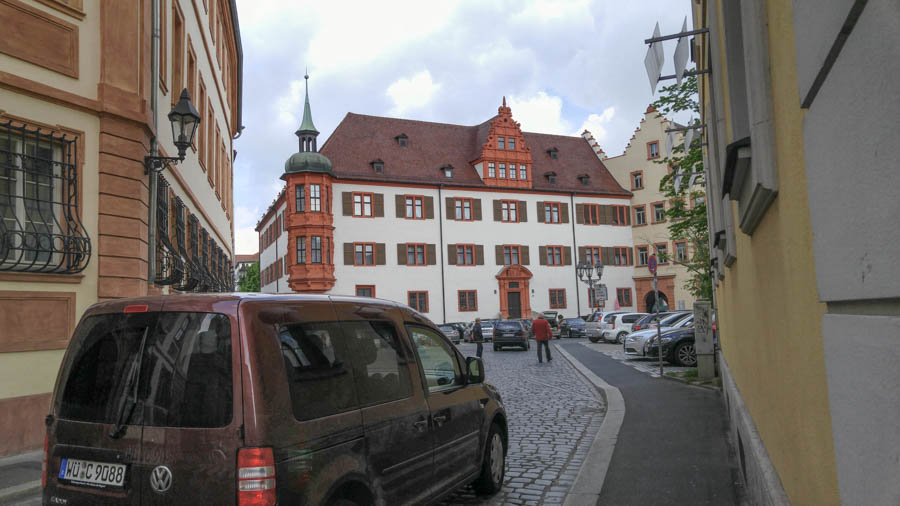
The street are fairly narrow
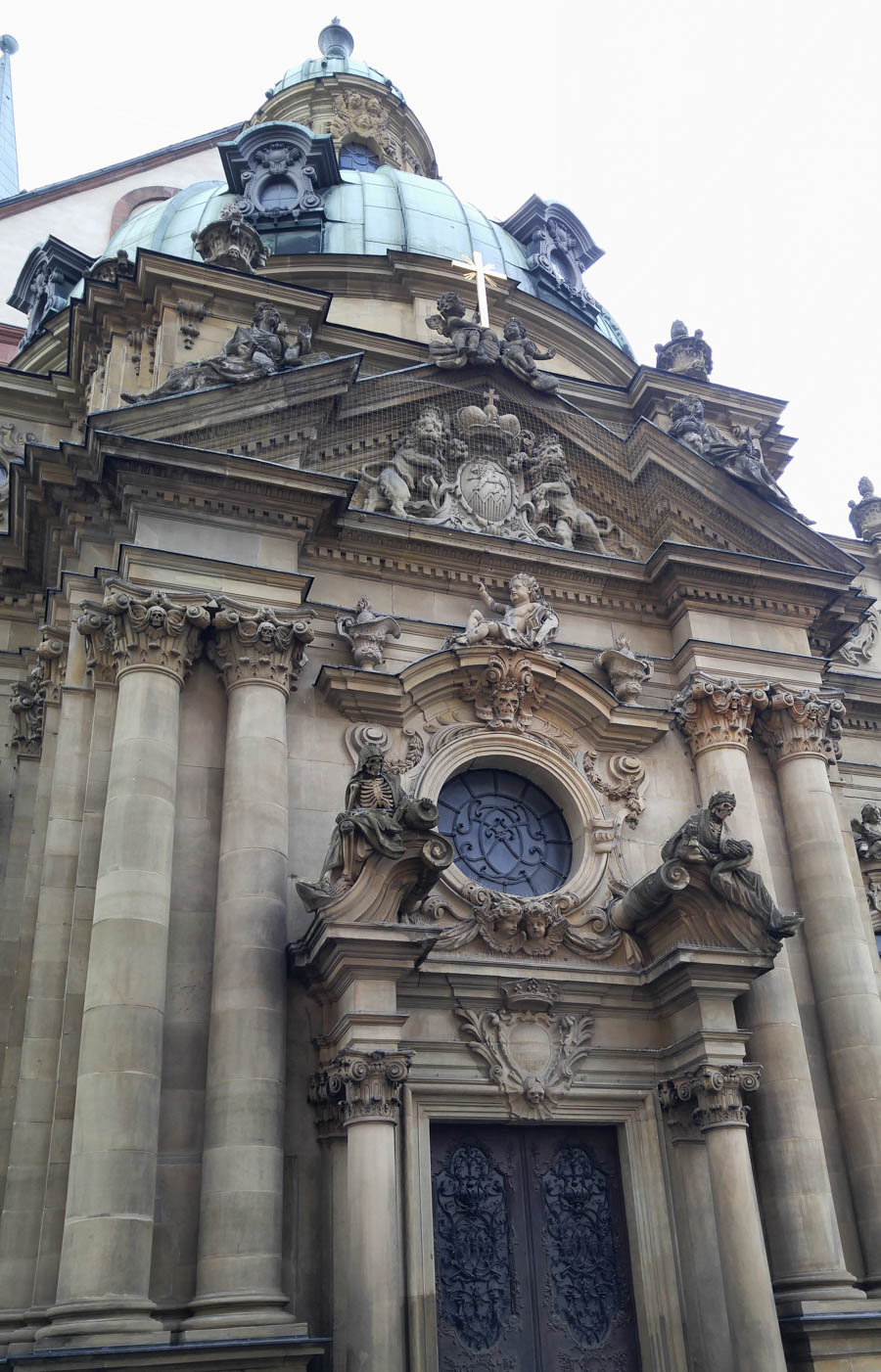
Dom St. Killian is a little frightening
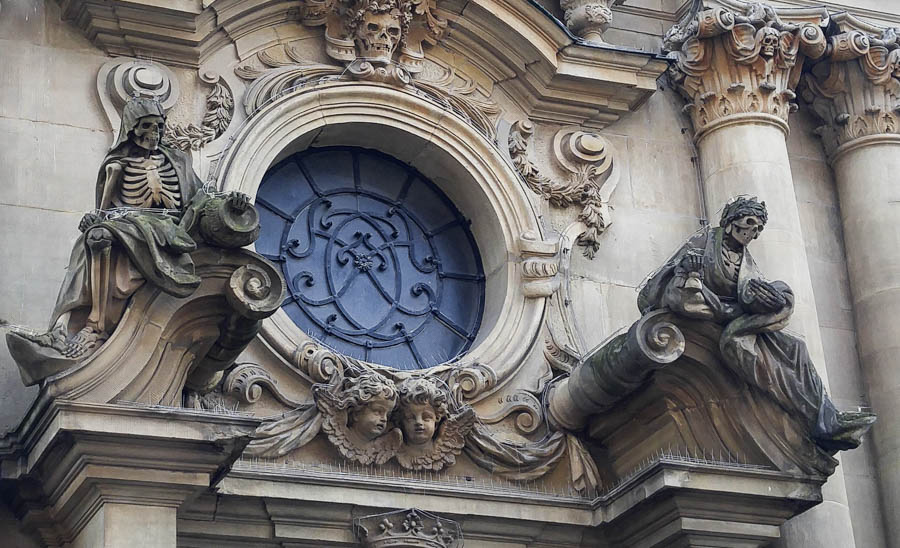
Take a close look!

Rapid transit covers the city well
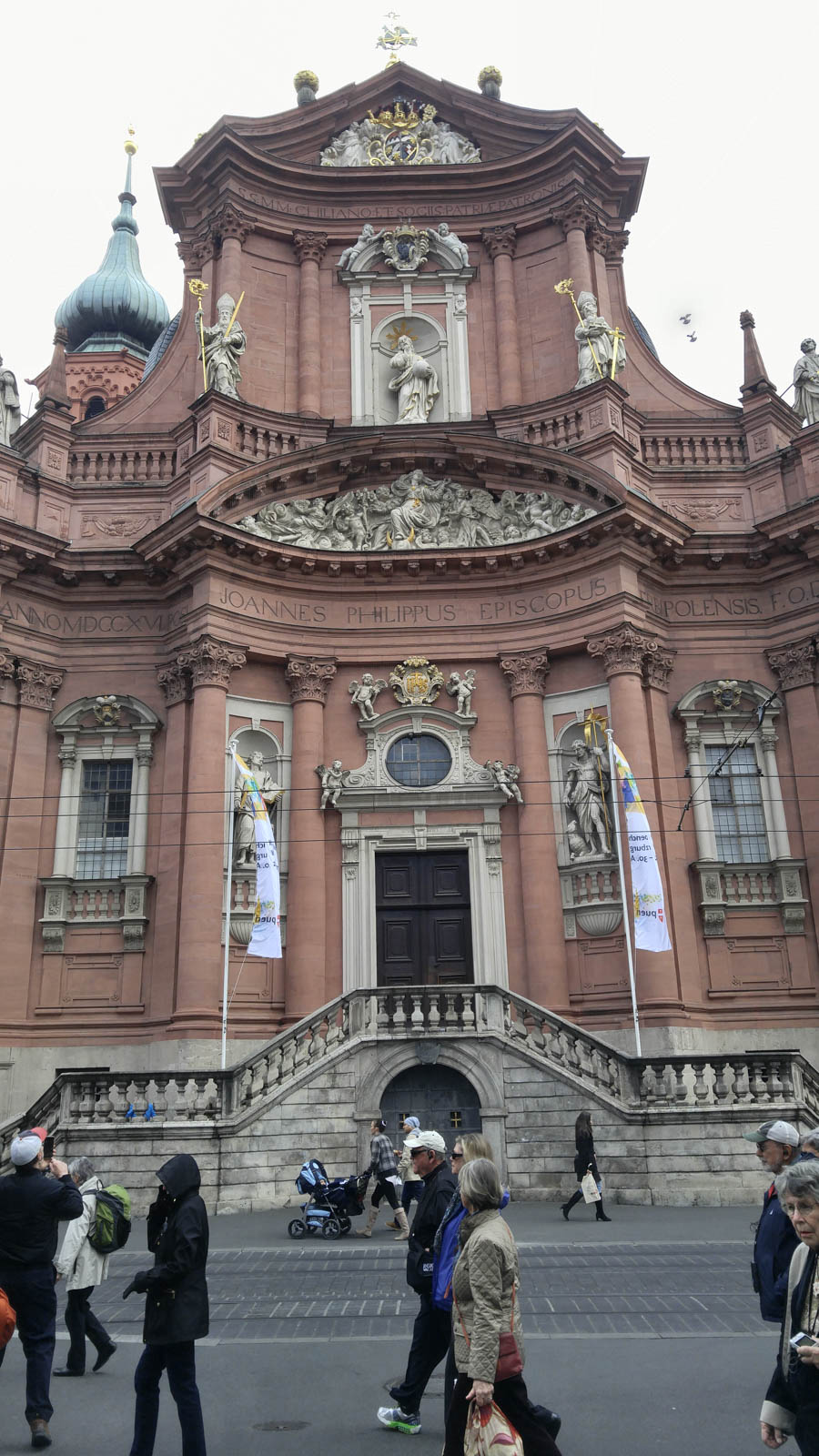
The Neumünster Church
Did You Know? - The Neumünster church was built in the 11th Century as a Romanesque Basilica. It is constructed on the site where 798 Irish Missionaries from Franconia were murdered. They had been martyred in 689 AD and included St Killian, St Kolonat and St Totnan. It has undergone an extensive refurbishment that was complete in 2009.
Previously the church has served as the main cathedral in Würzburg owing to it sustaining less damage during the bombing of Würzburg in WW2. This lasted after the war until as late as 1967 when the cathedral was finally reopened.
It is a large Baroque building with a huge dome and sandstone façade which was added in the 18th century. Inside are many works of art, such as the 15th century Man of Sorrow, and a Madonna. Parts of a former cloister remain in a quiet courtyard.
People buried here include St. Kilian, St. Kolonat, St. Totnan, and Walther von der Vogelweide. The skulls of the three saints are carried in a procession each year by theological students from the crypt to Würzburg Dom.

Marienkapelle Church
Did You Know? - The Marienkapelle is a Roman Catholic church located at the Unterer Markt (market square) of the town of Würzburg, Bavaria. It was built in the Gothic style in the 14th century. Despite its large size, it is a chapel by status, as it does not have a parish. Today it is administered by the united parishes of the Würzburg Cathedral and the Kollegiatstift Neumünster

Outdoor markets flourish in this city

City Hall Square
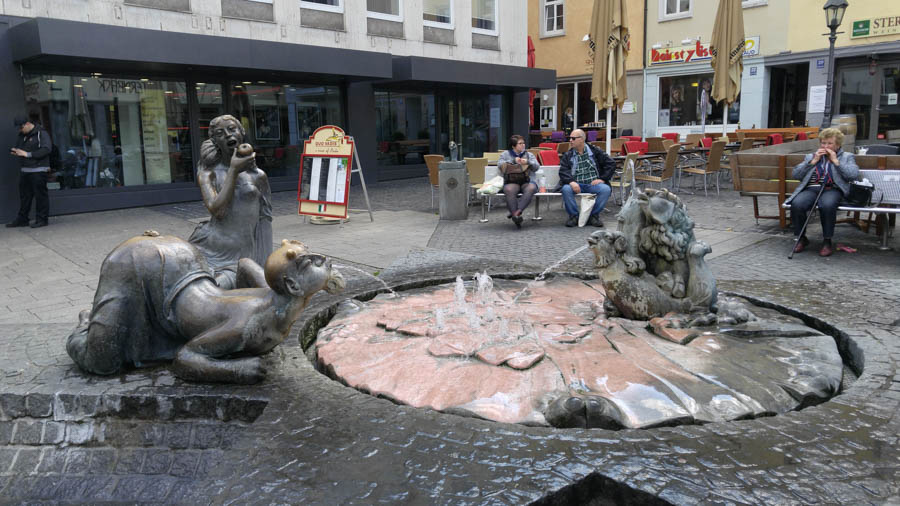
Whimsical!

Monkey see... Monkey do!
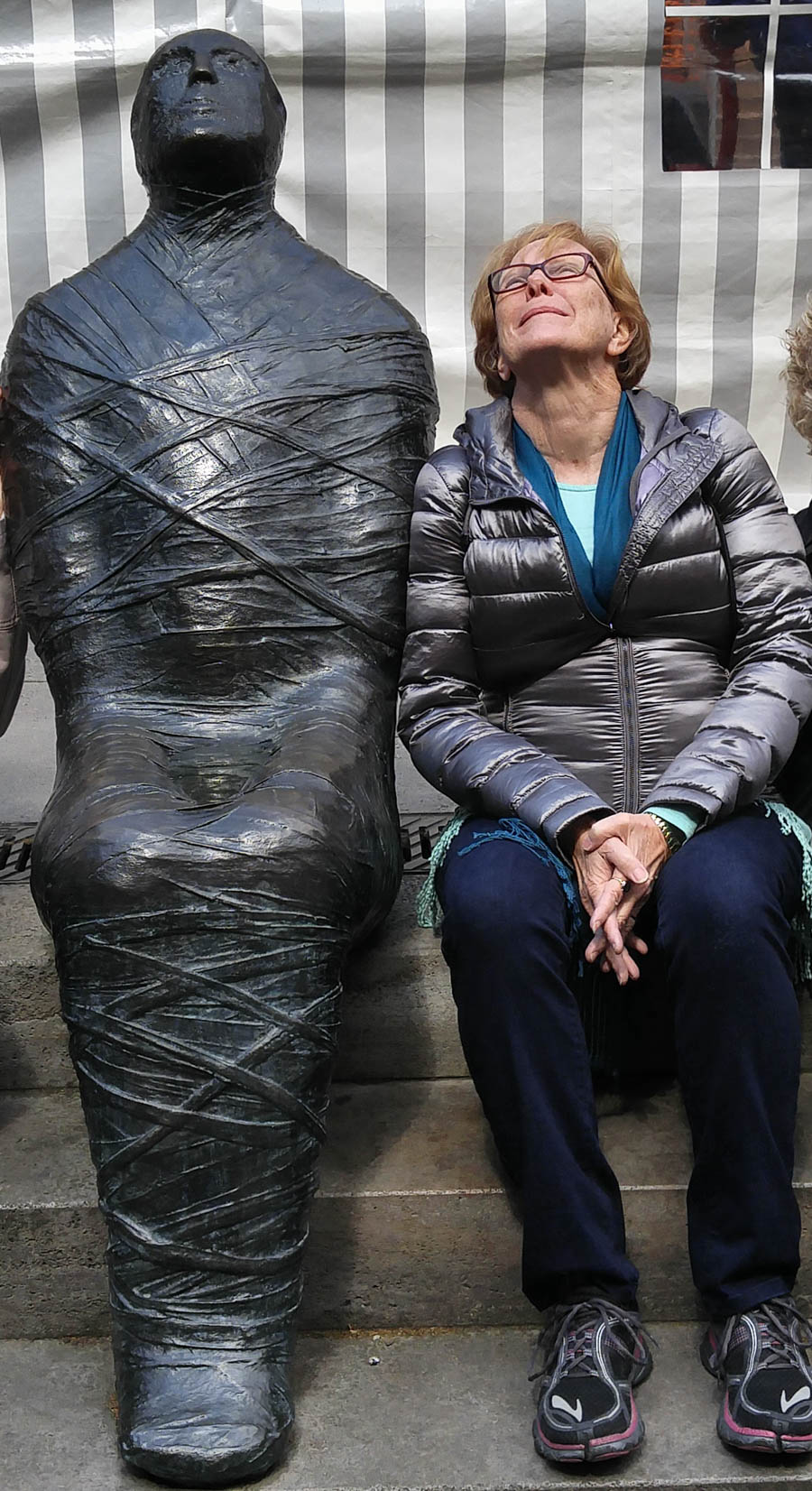
Me and my mummy

The famous restaurant Ratskeller... Great food and excellent reviews
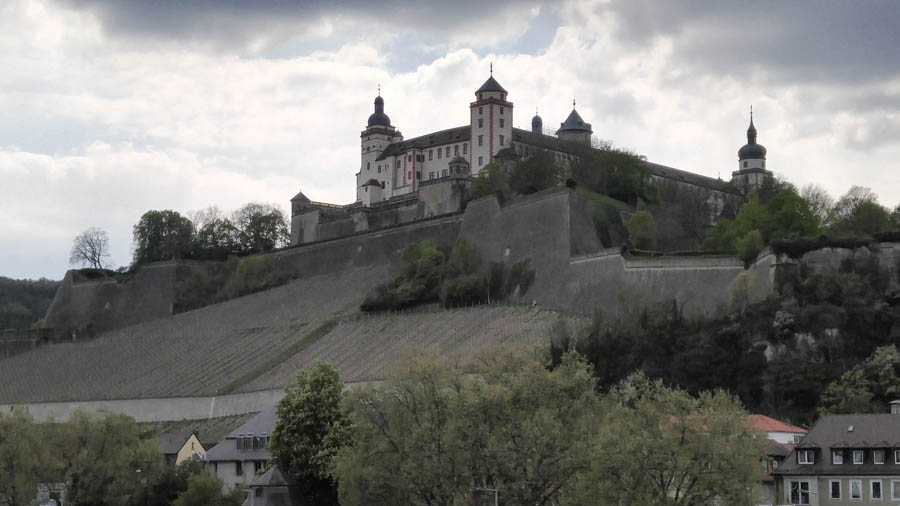
The fortress can be seen from all over the city
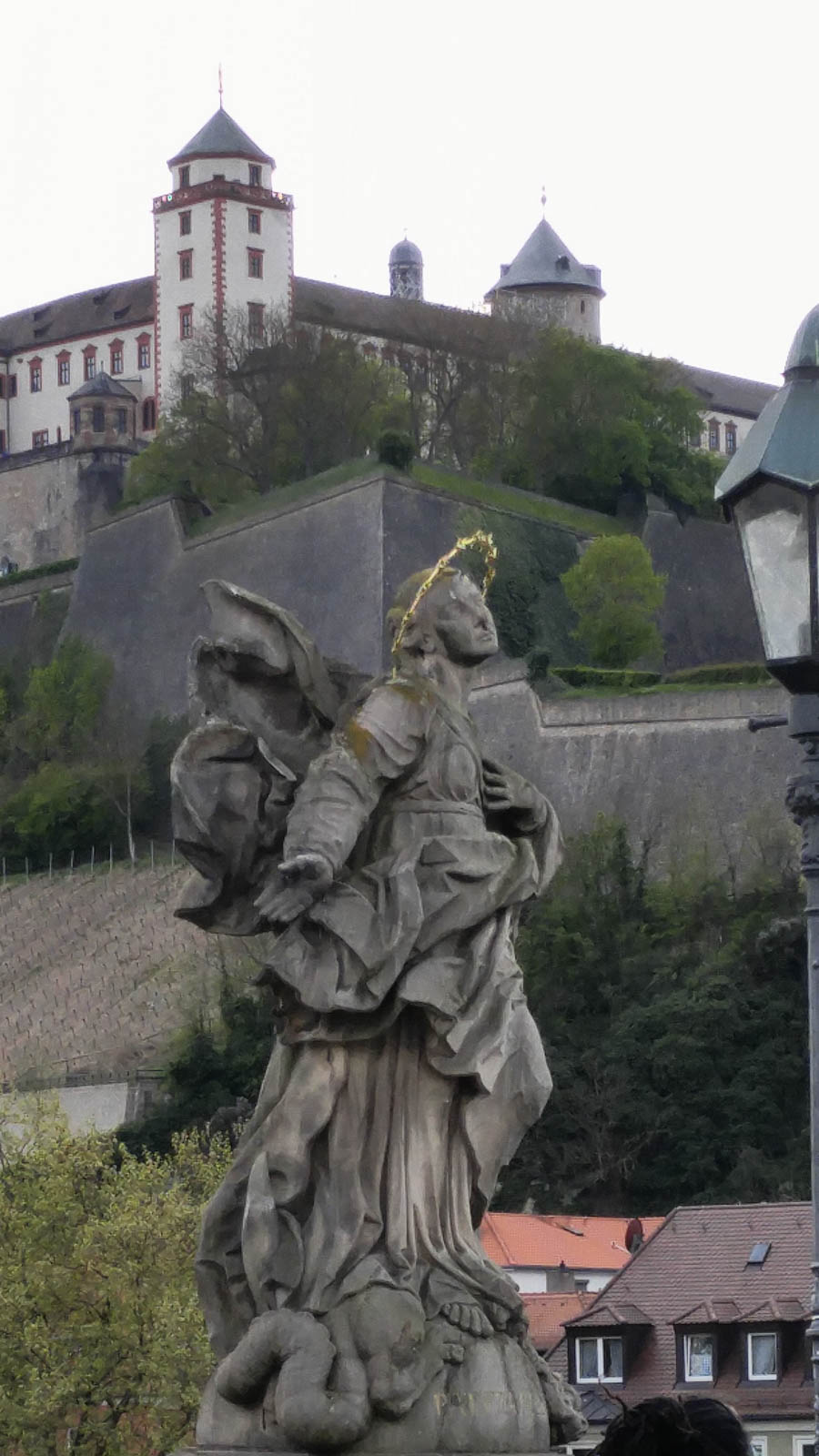
Statues at every corner... Almost!

The docks and the winery are close by... Accident? We think not!

Back over the bridge toward our ship!

Interconnecting canals
Did You Know? - The Rhine–Main–Danube Canal (German: Rhein-Main-Donau-Kanal; also called Main-Danube Canal, RMD Canal or Europa Canal), in Bavaria, Germany, connects the Main and the Danube rivers across the European Watershed, running from Bamberg via Nuremberg to Kelheim. The canal connects the North Sea and Atlantic Ocean to the Black Sea, providing a navigable artery between the Rhine delta (at Rotterdam in the Netherlands), and the Danube Delta in south-eastern Romania and south-western Ukraine (or Constanța, through the Danube–Black Sea Canal). The present canal was completed in 1992 and is 171 kilometres (106 mi) long.

Wine was readily available...

We are back on the ship getting ready to sail at 5:54 PM to Hassfort

Goodbye Wurzburg...

Under the bridge and away we go

The lion stands guard
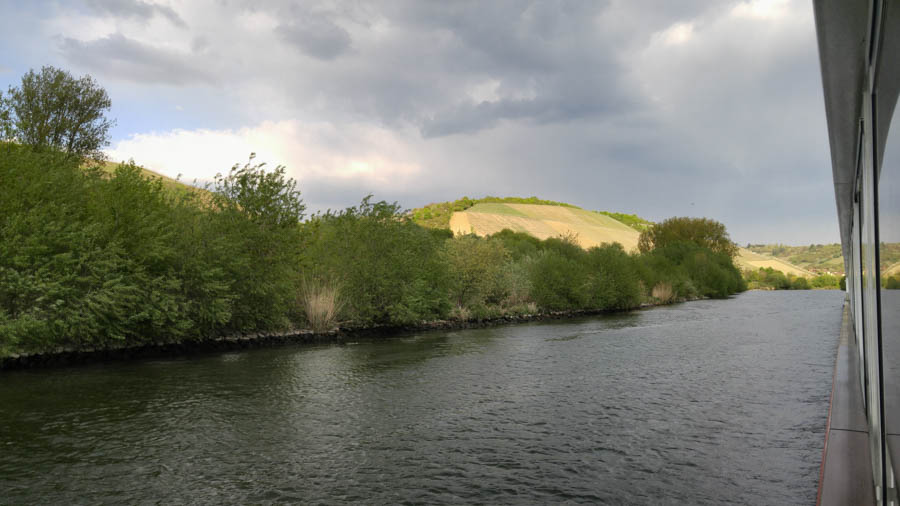
We are well on the way... Time to relax

45 miles to Hassfort and then on to Bamburg
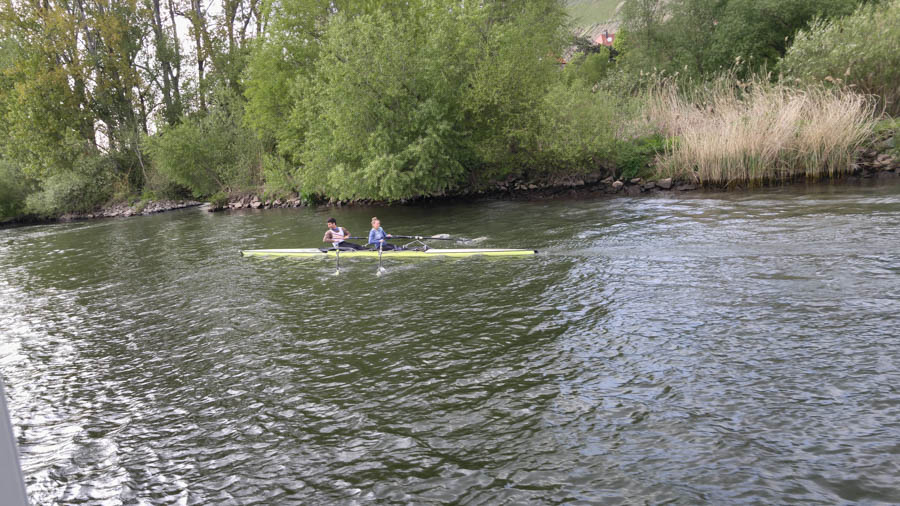
Chugging right along!

Wine everywhere

On to Bamberg Germany via Hassfort (Page Twelve)
